#participatory design
Text
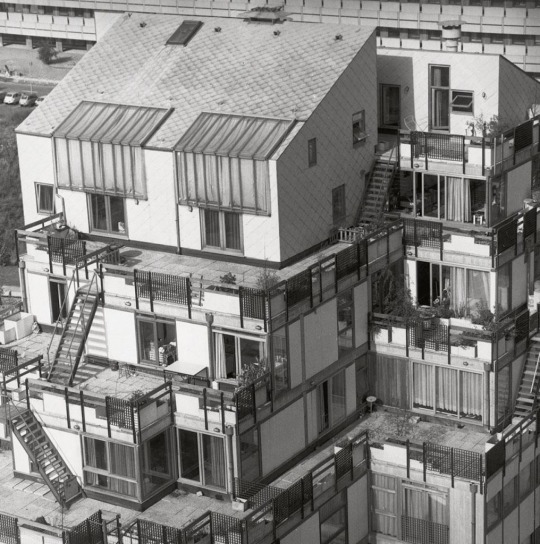
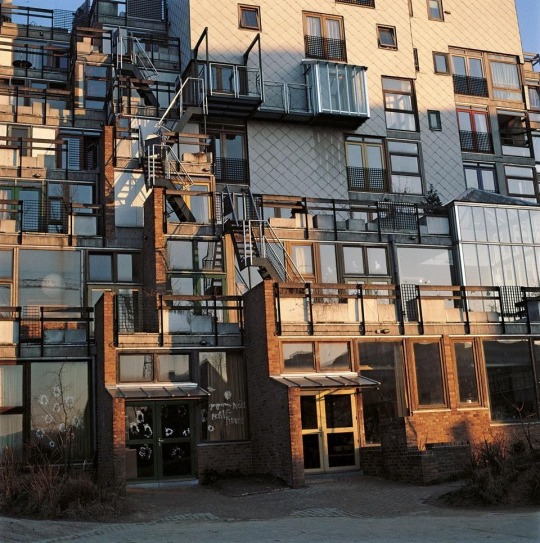


La MéMé, the University of Louvain Faculty of Medicine, designed by Lucien Kroll (1927-2022) Landscaping by Simone Knoll (1928-)
#Lucien knoll#Simone knoll#la meme#Louvain#University of Louvain#may 68#participatory design#architecture
5 notes
·
View notes
Text
Visual Diary 7: Participatory Design in Action
I attended a conference this week that focused on leadership in learning and development. A panel speaker shared an incredible example of design leadership. Her organization recently leveraged a participatory approach to design the company's new strategy. Employees of all levels (excluding C-Suite) were invited to apply to be part of the team. The team was responsible for research, ideating, defining, and communicating the new strategy (with support and feedback from relevant support and operations groups). This empowering approach resulted in huge buy-in, ownership, and accountability from the employees who were part of the team--and all the employees they brought along with them through their relationships.
#design tactic#human centered design#design strategy#participatory design#design leadership#design intervention
0 notes
Quote
Yes, we need to go into communities. But we should be looking to find the creative people in those communities who are already addressing their problems. People who live in the community don’t need anthropologists and design researchers to figure out their needs. They know the problems and they often have creative ideas. Moreover, they present practical solutions because they understand the culture, the capabilities, and the resources of the community.
TO CREATE A BETTER SOCIETY by Don Norman
0 notes
Text
Housekeeping by Design
It was September 3 1984.
Housekeeping by Design has explored how those who create these particular spaces are ignorant about how design functions and dysfunctions within the context of these strange locations where people come to sleep, eat, celebrate, and fantasize for short stays, being blissfully unaware about the ways in which their expectations about design—both in its material and service manifestations—affect labor. Once we engage with design as a process that involves multiple constituents and actors, we can begin to encourage more equitable work environments
— David Brody
1 note
·
View note
Photo

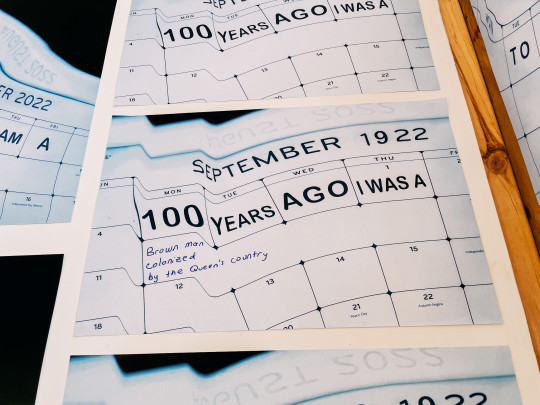



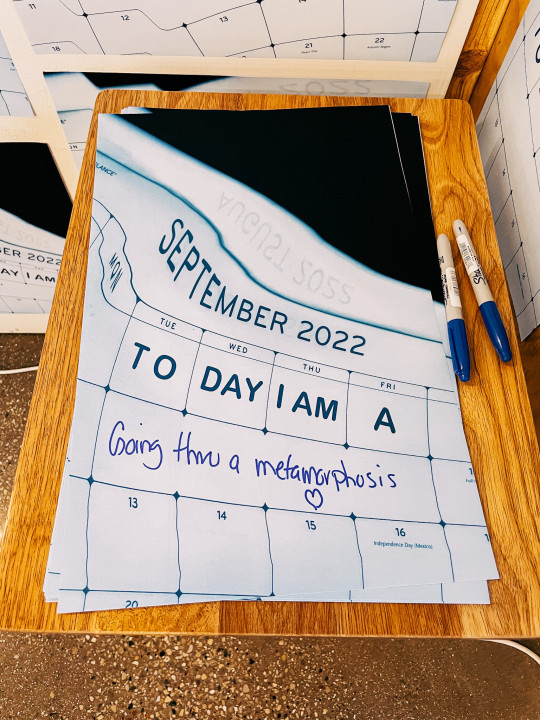
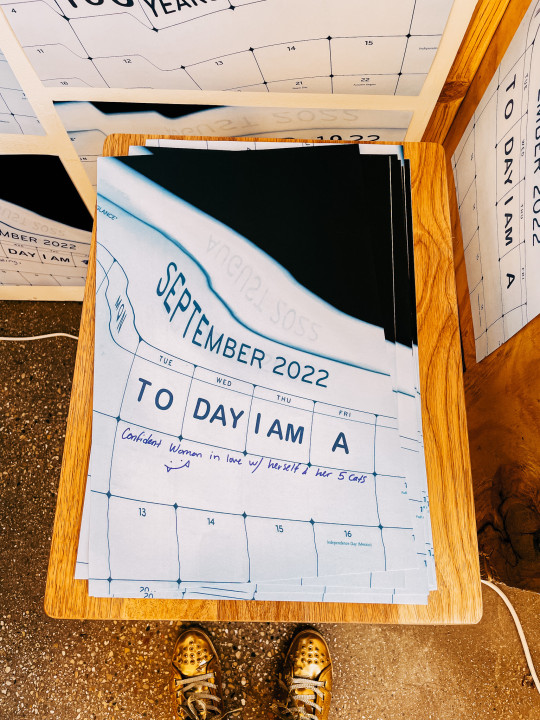


Some of my favorite interactions with Artists on the Lam featured artist Zachary Trebellas’ Time Warp at the I CAN DO THAT 10th anniversary celebration, mini edition at MdW Art Fair, last weekend at Mana Contemporary Chicago! // © Jenny Lam
#interactive art#metamorphosis#transformation#history#grand rapids#chicago#art#artist#artwork#artists on tumblr#art fair#interactive#participatory art#contemporary art#inspiration#curator#writing#community#identity#design
3 notes
·
View notes
Text
friend and i saw FNAF
it was a pretty fun movie !
i think it kinda. fell apart at the end a little lol. but it was fun and frankly i think thats all that really mattered. the animatronics looked so fucking good.
a bit cheesy in some parts but i went in expecting Not A Lot. blumhouse kinda produces a lot of everything, not all of it good, but i did have hopes that bc of the importance of the franchise as a sort of idk, neo horror monolith (is that anything) itd be good. and it was!
Fucking. Kids in the audience though. Im about to beat the shit out of children. They do NOT know how to behave in a theatre.
#im not really a big f/n/af fan since it first came out#but i do have a bit of nostalgia for it#ill be honest i wasnt totally thrilled w sprngtrap but it was [spoiler redacted] so i forgive him#still i did have fun and it was a fun movie#very sill at parts. surprsingly effective in others#the set design was incredible. i feel like i can tell the people who made the set genuinely love the game#i get some theatres in like. big cities or w/e are noisy and a participatory experience.#so sure i forgive the noise. even though we are a Very Small Rural Town. but man. BEHAVE.#turn OFF your phone or at LEAST turn down the brightness. get your FEET off the SEAT.
0 notes
Text
so this designer i connected with while i was at my last job (former Chief Strategy Officer at a different firm) has just founded a new consultancy and i am now foaming at the mouth to work there (at least on a contract basis)
#its so perfect#its already way more organized than agncy i can just tell#and its a private company but its systems thinking and participatory design#which means none of the nonprofit bullshit at least hypothetically#and that the stuff i'm uniquely good at and have experience in is highly relevant#also i have a lot of respect for this lady shes very cool and seems like an excellent designer and also like cool and fun#and definitely neurodivergent lol#i wanna work for her#loumusings
0 notes
Text
Homestuck Fans: Media Theory and the Fans that became Home-Stuck, Igniting a Shift in the Zeitgeist
As a media scholar, I would say that Homestuck is a groundbreaking webcomic that has had a significant impact on the online media landscape. Created by Andrew Hussie, Homestuck is a sprawling narrative that combines elements of science fiction, fantasy, and comedy in a unique and compelling way. The comic’s use of interactive elements, such as animations, music, and reader participation, sets it…

View On WordPress
#community#cultural awareness#e learning#education#fan culture#fandom#fanfiction#Homestuck#immersive#instructional design#internet culture#learning#media convergence#media studies#multimedia literacy#narrative#online media#participatory culture#social media#subculture#transmedia storytelling#webcomic#webcomics
0 notes
Text
Re:Wild Royal Docks
From 2020 to 2021, Usman Haque was Creative Director of Re:Wild Royal Docks, a ten-year vision for wilding East London, initiated by EdenLAB in association with Eden Project.
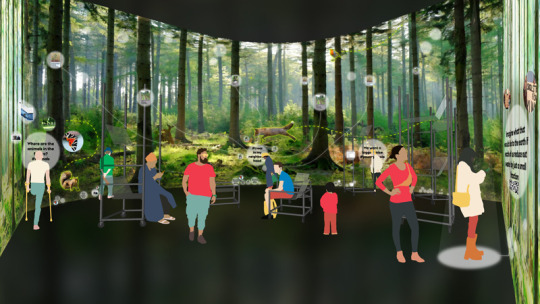
Rewild discussion, deliberation and decision-making space
Post by Usman Haque, original post at https://haque.co.uk/work/rewild/
Urban wilding is more than just improving access to nature: it involves redesigning urban infrastructures to account for our non-human neighbours, so that we don't just co-exist, but, more importantly, that we are mutually supportive and generative. From 2020 to 2021, I worked with the EdenLAB team and a number of organisations around East London to develop a transformative vision for the area, focused on re-connecting people and the natural environment. Our work was sited at Royal Docks, London, but much of the learning can be applied to other urban contexts.
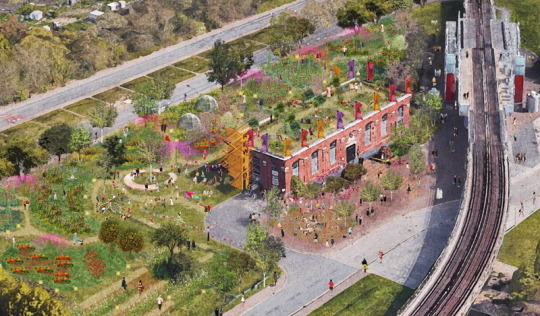
Proposed Rewild HQ, image by project architects Gort Scott
Challenges of Urban Wilding
Connecting an increasingly urban population to the natural world lies at the heart of humankind's successful response to the major environmental, social and economic challenges of the 21st century, which are particularly prominent in global capital cities. It may seem self-evident that everyone loves green cities, but there is no cross-cultural consensus on how, why and when to use green urban spaces, what they mean to different families or organisations, or even how local authorities should care for them. Ascribing agency (and in some cases citizenship) to non-humans makes the question of governance even more complex.
One person's lovely 'wild' meadow is another person's unkempt park suffering from lack of maintenance — or loss of a vital sporting resource — or apparent waste of tax-payer money. If this diversity of perspectives (and expectations) is not explicitly accounted for in the development and deployment processes of urban wilding schemes, evidence shows that they're bound to fail. This requires more than just consultation and engagement — active meaningful participation of communities in the decision-making processes is crucial, as well the ongoing governance of urban wilding.

Re:Wild Royal Docks primary rewilding site
A Strategic Approach to Urban Wilding
The strategic approach that I developed for
Re:Wild Royal Docks
combined greening of the urban landscape and improving biodiversity with a participatory approach to rewilding, getting people actively involved in making decisions about green spaces and systems, while getting them to feel a little 'wild' themselves.
Supported by the Eden Project, our aim was to get people excited, while retaining an emphasis on governance, accountability, and decision-making, all built on the science of environmental improvement and recent research on non-human intelligence and sentience.

Rewilding through growing, eating, learning, nurturing
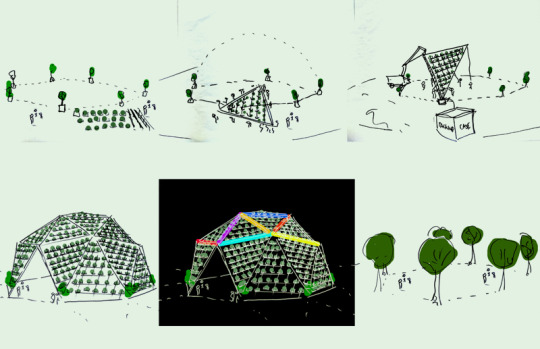
Rewilding through barn-raising
A key goal was to transform how local residents relate to each other and the natural environment, and empower them to make simple changes to their homes and neighbourhoods that improve environmental and sustainability factors. To help people get comfortable being 'wild' themselves, we designed a set of core activities to help them reassess their relationship to the natural environment, particularly those that reinforce connections between people:
EATING food together
GROWING plants at home
NURTURING (landscapes, non-humans, etc.) together
MAKING (things, decisions) together
LEARNING (about each other, non-humans, etc.) together
Rewilding is a fundamental strategy for tackling the Climate Emergency in cities. It needs a completely different perspective (to 'green buildings'; to participatory engagement in cities; to the deployment of urban infrastructure) from the approach that is usually adopted in urban development.
It requires more than just planting trees and flowers that improve pollination. It upends everything we think about public space (and who is responsible for it), challenges how we make collective decisions about food, and makes us far more conscious of the collective effect we have on the environment we all depend upon. It requires an integrated, holistic and inclusive approach to everything from buildings, parks and public spaces to homes, balconies and waterfronts — and even the concept of citizenship.
...
Re:Wild Royal Docks — A Ten Year Wilding Strategy
The Ten Year vision for Re:Wild Royal Docks included establishing:
A. Wilded Urban Spaces & Headquarters
Physical Headquarters at Royal Docks for urban wilding, with co-creation space, roof garden, food offering, event space and immersive interactive rewilding experience
Network of Green Spaces, Wild Places and Biodiversity Corridors across the borough — starting with the 12-acre area surrounding the HQ — with particular focus on soil remediation and biodiversity restoration to ensure thriving aquatic and woodland ecologies, and connecting together areas of the urban fabric to improve both human and non/human mobility
______________________________________________________________
B. Community Call To Action, New Facilities & Resources
Call to Action to get communities all over involved, with borough-wide outreach and education activities and curricula involving planetary care, tree planting, biodiversity restoration and the on-going stewardship of woodland ecologies locally
Cultural Innovation Destinations and Spaces set in the natural landscape, including a 'Rewild Kitchen' and Cafe in a tree-house, along with 'lectures in the landscape'
Green Business Cluster and Creative Hub in partnership with local universities
Community-led Workshop & Lab for Creative Production in urban wilding
Educational and Cultural Events Programme centred on rewilding and connecting humans and non-humans
Showcases for Local High-Tech Sustainability Systems including simple soil remediation schemes for local residents and businesses
Grant Scheme for Promoting Local Innovation in human/non-human cooperation and green infrastructures across the borough
______________________________________________________________
C. Technology Infrastructure for connecting Humans & Non-humans
Digital Masterplan designed around rewilding — instrumenting the landscape, creating a 'sixth sense' of the natural world, and a collective intelligence infrastructure to combine human, non-human, synthetic sensing
Digital Interventions and Deployments to augment human understanding of non-human systems, both indoors and outdoors — giving a 'voice' to non-human participants
Immersive Interactive Discussion + Deliberation Space connected to sensor networks and environments throughout the borough, hosting community groups making collective decisions on key issues to do with the Climate Emergency, informed by real-time environmental data
______________________________________________________________
D. Rewilding Activities & Related Events
Floating Farms, Adventure Play, Wild Swimming and other water-based stewardship activities
Human Wilding Activities such as tree-climbing/doctoring and beekeeping, both in the landscape as well as on the water
Annual Re:Wild Summer Festival to showcase participatory urban rewilding through arts and music as well as a conference
Annual 'Barn-Raising' Initiatives to co-create new low-carbon structures in the landscape in support of biodiversity
______________________________________________________________
E. Multi-species Governance & Stewardship Processes
Long Term Masterplan and Asset Register for local natural systems, ecosystem analysis, horticulture mapping, species-identification, etc. with a focus on exploring non-human citizenship, tree-planting/adopting schemes
Community Advisory Board and Governance Process, incorporating non-human participants, and a Rewilding Charter co-created with the local community
Youth Council for Human/Non-Human Cooperation in tackling the Climate Emergency
Formalised Processes for revitalising unused local assets including unused green spaces, allotments, unused buildings
...
Re:Wild Royal Docks Digital Masterplan
The base layer of the proposed masterplan was to instrument the landscape, non-human species and natural environments through sensor networks and monitoring stations, gathering data in order to provide a means for observing patterns of activity, interaction and response. This would contribute both to real-time data repositories as well as to a long-term register of local non-human species, natural systems and ecosystems (so that, for example, tree-planting schedules could support monitoring development, growth and change over the entire lifetime of a tree, and feed into air quality impact assessment for individual trees).

Human/non-human activity - interaction - response - conversation
This would be augmented by a second layer of interventions in the landscape that would enable members of the public (and, for example, students from nearby schools) to observe and 'listen in' on what was going on, beyond their usual thresholds of perception (e.g. visualising or sonifying real-time data and other augmented reality interfaces). Building on this active observation, and tied into design, technology and sustainability curricula, people would be able to contribute to making sense of the observations and (albeit in an anthropocentric way) give a "voice" to the non-human species around them throughout a set of activities that would generate additional multi-layered subjective metadata for the datasets.

Instrumenting the landscape & giving a 'voice' to non-humans
Finally, a third layer would integrate this sense-making approach with artificial intelligence pattern-recognition and creation, in order to combine human, non-human and synthetic systems into a collective-intelligence infrastructure. This would be manifested in an immersive and interactive physical space, connected both to the on-site network as well as sensor networks and environments throughout the borough. This space was designed to host local residents, community groups and businesses making collective decisions on key issues to do with the Climate Emergency, informed by real-time environmental data and input from non-human neighbours. In contrast to typical "smart city operations centres" that centralise surveillance and control, this would be an open space for discussion, deliberation and decision-making, uniting both humans and non-humans.
...
Urban & Community Transformation through Wilding
Although the scheme was eventually not taken through to implementation stage, much of the strategic approach (involving multiple layers of connection, co-creation and interdependence) applies more broadly to other urban contexts.
If a city is to be truly innovative, it needs to embrace the fullest creativity of its residents — human and non-human. It needs to consider new imaginative possibilities for informal urban green spaces, and show communities how they can nurture them alongside non-humans, bringing both tangible physical benefits as well as emotional and physiological benefits and strengthening the wellbeing of communities as a whole.
People often say they want their cities to be more "green", and understand that tree-filled parks and vegetation-covered buildings could make cities more delightful, healthy and sustainable. But what that means to different people is less certain and bringing such desires into reality is fraught with complexities — economic, social and environmental. How do we, collectively, bring about that kind of future? How can we navigate those complexities and overcome barriers — perhaps even discover that the barriers weren't so high? How can we all be part of the decision-making — and with that, take responsibility for a greener and more inclusive urban future we all co-create? Deliberately (and deliberatively) wilding the city offers answers to all these questions.


Rewild discussion, deliberation and decision-making space
The innovation of rewilding is so much more than just green engineering: in its decentralised nature it can offer a radically different approach to getting people involved with decision-making, one that necessarily includes embracing non-human intelligence and sentience. Through a coordinated rewilding programme, whether people are campaigning to turn unused urban space into community gardens, working to plant trees in their neighbourhoods, enjoying the health and well-being effects of birdsong or just planting a tomato seedling in a window-box, they can all understand they're part of a larger city-creation exercise. At its heart, rewilding can help reinforce confidence between local authorities and residents in a way that most engineering-focused 'smart city' programmes can never achieve, contributing to vital re-configuration of a range of existing infrastructures:
- Community/social infrastructures — engagement, agency, cohesion, education, upskilling
- Architectural & urban infrastructures — buildings, indoor spaces, landscape, vertical surfaces
- Technology & digital infrastructures — data, interaction, sensing, sustainability platforms
- Health, Environment & Well-Being infrastructures — active travel, biodiversity, food & sport
- Economic infrastructures — circular economies, local investment, value-driven impact

Rewild School, image by Public Works
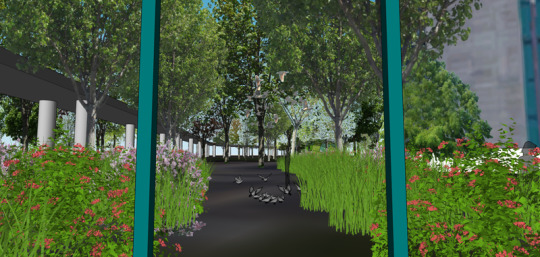


Rewild landscape augmentation

Giving a 'voice' to non-humans
...
For more on this topic, see videos and discussions below:
Wild Cities — with Rosanna Vitiello — 2021
What Will Our View of Nature Bring to the Future? — 2021
...
Core Team
Usman Haque — Creative Director, Re:Wild Royal Docks
Mike Wellings — EdenLAB, CEO
Peter Hampel — EdenLAB, Artistic Director
John Tellwright, Katie Maddison, Richard Dare — EdenLAB production team
With thanks to the following for their enormous contributions to the project and its development: Fiona Scott (Gort Scott), Chris Paddock (PRD), Suzi Martineau (Tree Sisters), Michael Brown (Asociat), Torange Khonsari (Public Works), Iram Quraishi, Stephanie Mechanic, Jeffrey P Davis, local community organisations and groups such as Growers Kitchen, Royal Albert Dock Trust and Green Hands, and all the teams at Royal Docks and London Borough of Newham who helped give context to the scheme.
And finally a massive thank you to all the rewilding practitioners and researchers around the world that are helping transform human/non-human cooperation. A key reference during development of this project was Rewilding - edited by Dr. Nathalie Pettorelli, Institute of Zoology, London, Prof. Sarah M. Durant, Institute of Zoology, London, Prof. Johan T. du Toit, Utah State University. Some of the initial thinking is described in this article: Making Cities Wild, building in particular on work by Bauer and von Atzigen; Maller, Mumaw and Cooke; Clayton; Dr Bridget Snaith.
#umbrellium#usman haque#news#Re:Wild Royal Docks#East London#participatory#city making#human-non-human relations#non-human citizenship#beyond coexistence#digital masterplan#participatory governance#multi-perspective#responsibility#agency#wild city#multispecies design
0 notes
Text
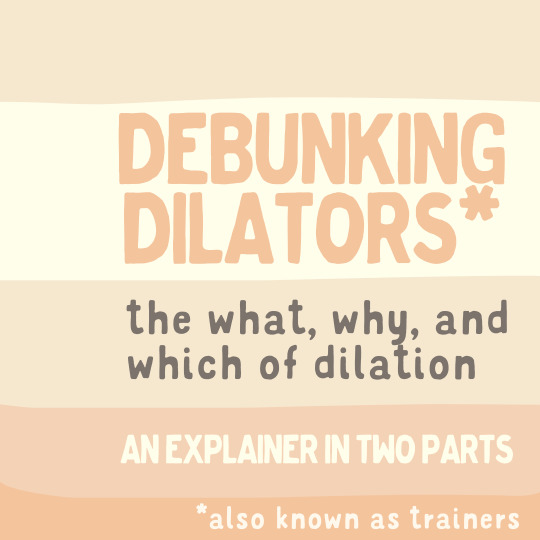
Caitlyn Tivy, the (awesome) pelvic health physical therapist, is back with us again, talking vaginal dilators in a new two-part series.
"Perhaps you’ve heard of dilators — also known as vaginal trainers — before, but you weren’t sure where to learn more about them. Maybe you’ve never heard of them, but you’re looking for ways to manage pelvic pain. Perhaps you’ve already tried using dilators, but weren’t very successful. Regardless, you’re in the right place!
“Vaginal dilator” is the most commonly used medical term for these devices, though many clinicians and researchers are shifting to the term “vaginal trainer.” Many pelvic PTs—myself included!—prefer the term trainer. Not only does “training” sound less aggressive than “dilation”, it also communicates a key concept of trainer use: it should be an active, participatory process in which the user is in control, rather than an experience that is happening to them as a passive recipient.
I also generally refer to these devices simply as just “trainers”. This terminology is inclusive for everyone with genitalia that allow for use of these devices. For these reasons, I’ll use the term “trainer” for the remainder of this article.
If you search online using the terms “pelvic floor trainer” or “vaginal trainer”, you may see ads for other devices designed to help people learn to perform pelvic floor exercises, or “kegels,” properly. These devices are not the same as the trainers we’re discussing here, but not to worry: I’ll include a guide to finding the right type of trainers later!
The trainers we’re discussing here are medical devices used to decrease pain and improve flexibility in the tissues of the vaginal and neovaginal canals.
Trainers can be made from a variety of materials. They are typically cylindrical in shape. At first glance, they can look a bit like sex toys, but that’s not their intended use. Trainers are designed to provide therapeutic stretching and pain relief for the tissues of the vaginal canal. Let’s learn more about the many cases in which trainers can be useful!"
287 notes
·
View notes
Text
DAY 5844
Jalsa, Mumbai Feb 17/18, 2024 Sat/Sun 1:47 AM
🪔 ,
February 18 .. birthday greetings to Ef Sriskandan SK from Sydney, Australia 🇦🇺 .. love from the Ef Family always .. 🙏🏻🚩❤️

... mixed up in the creative designing of an animal kingdom and declaring the impossibility of being able to manufacture something in this sphere with relative ease ..
.. communication utensils - if one can take the liberty of addressing them thus - have given answers to all and sundry in various all and sundry apertures ..
the era of not knowing .. of seeking with some deliberation, has vanished .. the question mark that invaded our psychological and mental disposition does not have any relevance .. indeed the only usage of the question mark now lies in the singular domain of the media .. they need it, for they are the ones that advantage themselves, in putting the questions to the World .. seeking answers .. and thereby debate on each response ..
" In a relentless quest for engagement and interrogation, the media adopts a unique approach by framing responses with question marks. This stylistic choice adds an element of curiosity and prompts critical thinking. Journalists, armed with the power of inquiry, transform statements into thought-provoking queries, inviting audiences to explore various perspectives. This technique not only challenges assumptions but also fosters a dynamic discourse. The media's pursuit of truth becomes an ongoing dialogue, as each response evolves into an interrogative exploration. This method not only captures attention but also encourages a deeper understanding of complex issues, transforming news consumption into an interactive and participatory experience. "

good night ..
😴
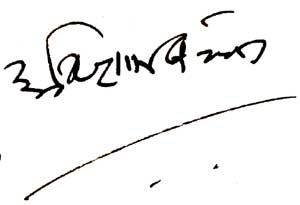
Amitabh Bachchan
119 notes
·
View notes
Text

Twitter was not invented by hotshot entrepreneurs. It was modeled on TXTmob, a tool activists designed for the protests at the 2004 Republican National Convention.
Real innovation comes from participatory experimentation, not profiteering.
Billionaires ruin everything they touch.
https://crimethinc.com/TwitterBought
676 notes
·
View notes
Text
Philadelphia Chief Administrator Office has a Service Design Studio, which supports service implementation efforts in the city by "collaborating with Philadelphians to design better City policies and services."
This blog series By the people (linked below) explores how the Service Design Studio partnered with the Office of Homeless Services (OHS) and the Office of Open Data & Digital Transformation (ODDT) to tackle homeless prevention, diversion, and intake services in the city. The project utilized participatory design methods to uncover and prioritize key opportunity areas and design solutions. The series describes their strategy and tactics in detail.
In one post, they described the ladder of stakeholder participation, which they utilized to guide their strategy and tactics. This ladder helped them define:
When are we looking for input?
When are we interested in brainstorming ideas?
When do people have decision-making power?
When are we simply sharing information?
I found this heuristic quite helpful for thinking about our commitments to our stakeholders.
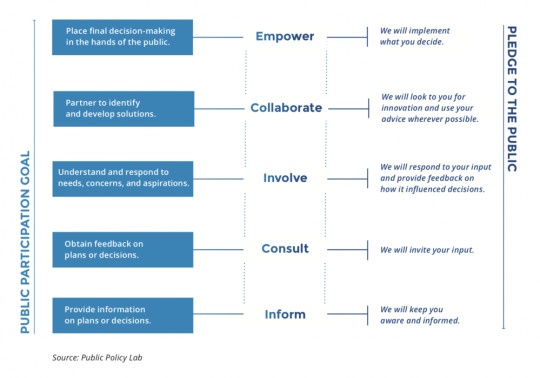
Even beyond the By the people series, the Service Design Studio blog offers many insightful resources. Highly recommend!
#empathic design#participatory design#service relationship#co-creating#human centered design#intentionality#design leadership#design strategy#design tactic#heuristic
1 note
·
View note
Text
by Ruth Wisse
Hamas recently beat the competition with a demonstration of savagery unlike the earlier improvised pogroms in Europe to which it has been compared. October’s slaughters were plotted with crucial input from Gazans employed in Israeli homes they had scouted and mapped for the purpose, making this the first military campaign designed to culminate in acts of beheading, torture, and rape of predetermined victims. As attempts to destroy Israel through conventional warfare had only made Israel militarily stronger, the new tactics aimed at destroying the Jews’ will to remain among antagonists sworn never to leave them in peace. More than to intimidate, these attacks were made to demoralize.
Survivor-witnesses describe new refinements of psychological warfare. Hamas murdered parents and children in each other’s presence so as to sharpen the survivors’ agony. They took hostages—not, as others do, for eventual exchange—but to taunt the country with images of prisoners’ suffering, and fear that many would never be returned. Every Jewish value—respect for women, honoring the human being who was made in the image of God—was gleefully defiled.
As for the Jews living in nearby Gaza, many of them self-described Jewish “peaceniks,” they had prided themselves on the medical help and hospitality they extended to their Gazan neighbors, persuaded that cooperation was obviously to everyone’s benefit. The terrorists exploited the Jews’ desire for peace as a means of entrapment and further opportunity for torment. By attacking on a Jewish holiday and a secular festival, they intended to destroy the Israelis’ joy in life. Anyone reading Dan Senor and Saul Singer’s exhilarating book about the collective strengths that constitute The Genius of Israel will recognize how Hamas turned precisely those virtues into weapons of torture to tear the Jewish people apart.
October’s slaughters were plotted with crucial input from Gazans employed in Israeli homes they had scouted and mapped for the purpose, making this the first military campaign designed to culminate in acts of beheading, torture, and rape of predetermined victims.
Nor does this exhaust their inventiveness. The Arabs’ strategy of martyring generations of their own people in the cause of eliminating Israel dates back to the 1947 refusal of Arab leaders to accept the partition of Palestine into two states—in order to keep Arabs perpetually homeless. Arabs were to remain permanently displaced as evidence of Israel’s “occupation” while Israel integrated the over 800,000 Jewish refugees from Arab lands and granted participatory citizenship to over 2 million Arabs who chose to remain in its boundaries.
Taking this tactic of martyring their fellow Arabs to a new level, Hamas turned Gaza into suicide central. Above ground, residents were allowed to conduct a quasi-normal life, knowing that, below ground, every school, every hospital, and many private homes were booby-trapped for the Israelis whom their leaders would lure into their cities. The IDF continues to uncover a tremendous amount of infrastructure built over years, confirming Hamas’ intention of invading and killing Israelis en masse. In the words of one of its soldiers “[It] is clear they expected us to arrive and laid plans to exact a cost in the form of IDF casualties.” The attack of Oct. 7 had to be monstrous enough to provoke Israel into full-scale war in the hope of rescuing the hostages and destroying the terrorists—a plan that would also ensure the collateral death of as many Gazans as possible to attract Western sympathy.
33 notes
·
View notes
Text

Today, on April 22nd, 1989 - Queen Story!
Queen filmed promo video for “I Want It All” at Elstree Studios, Borehamwood, UK, director David Mallet
🔸Roger Taylor: Yes, it is our first studio album since 1986, I think that the reason for, for the delay, no, not the delay, for the long wait in between was that we wanted to sort of go away, and just recharge our batteries, quite logical really, and er, and just sort of generate some, some new energy and enthusiasm for, for being Queen
John Deacon: After we did the, the tour in 1986, which was a very big European tour, we were all absolutely exhausted, and shattered, and basically we didn't want to really work together or see each other for a while
Roger Taylor: To get into the whole cycle of er, just making an album, then going on tour, then coming back home and making an album again, we wanted to get out of that
Brian May: We said right, we'll take a little break, we're not, we're not going to split up, but we just er, we need some space for ourselves, and when the time is right, we'll make the album, rather than, you know, somebody says you've got to make one so we make one, so we waited, and we did some, did various other things, you know, Freddie and Roger both did solo projects, and I'm half way through one, and did a lot of producing
John Deacon: That took at least a year to a year and a half, and then towards the end of that second year, er, we sort of met up, and Freddie suggested, I think it was Freddie, perhaps we'd try a little time in the studio
Roger Taylor: So we went into the studio, saw what it was like, and we enjoyed it very much, and we still didn't have any material, so then we decided to go in for the long, for a long, longer time
John Deacon: You know, the third year was spent making the album, so the, in a way it was a two year gap to us, rather than three years, and er, and what was the, I've forgotten the second part of the question already
Interviewer: Did it help you to return to the studios feeling refreshed?
John Deacon: Yes (laughter) yes
The first few weeks of the recording we did a lot of live, er, material, a lot of songs um, ideas came up, some jamming, we had a few ideas that were already prepared, er, 'I Want It All' was one of the, one of the few songs that was actually, written before we went in
- From 'The Miracle' Interviews
Various and separate interviews recorded with Brian, Roger and John on the set of the 'Breakthru' promotional video, May 1989
👉"We were heading into the period where we decided to share the credit for all the songs, and John has said that [the song] was pretty much a finished song when we went into the studios – that's true, it was just this riff that I was obsessed with for months. The actual title was a favorite phrase of Anita's, a very ambitious girl: 'I want it all, and I want it now '... We were never able to perform this song live. It would have become something of the staple core of the Queen show, I'm sure, very participatory. It was designed for the audience to sing along to, very anthemic."
- Brian May, interview 2003, from Greatest Video Hits 2
#i want it all#queen 1989#1989#davidmallet#promo video#freddie mercury#queen band#london#zanzibar#legend#queen#brian may#john deacon#freddiebulsara#roger taylor#the miracle album#uk
21 notes
·
View notes
Video
youtube
12 Hz Alpha Wave and 6 Hz Theta Wave 'New Year, New Me' Affirmations
Welcome to our transformative video, "12Hz Alpha Wave and 6Hz Theta Wave 'New Year, New Me' Affirmations" – Elevate Your Mindset, Manifest Positive Changes, and Embrace the New You! 🌟🎵
🌊 **Dynamic Frequencies:** Immerse yourself in the harmonious blend of 12 Hz Alpha Wave and 6 Hz Theta Wave, creating an optimal state for deep introspection, positive visualization, and transformation.
💬 **Powerful I AM Affirmations:** Explore the principles of the Law of Attraction, Law of Assumption, and manifestation technique with affirmations designed to align your mindset for positive changes in the New Year.
🎶 **Manifestation Frequency:** Elevate your manifestation experience with frequencies tuned to attract abundance and manifest your desires.
🌙 **Sleep Meditation Manifestation:** Utilize this session for a restful night's sleep, allowing the affirmations to work on your subconscious, fostering positive changes as you rest.
🔊 **Manifestation Music:** Let the soothing background music enhance your affirmations experience, creating a serene environment for self-reflection and transformation.
🔗 **Stay Connected:** Like, subscribe, and hit the notification bell to stay connected with our empowering content.
🌟
💫 **Embrace the power of manifestation, elevate your mindset, and welcome the new you in the New Year with us. Let's embark on this transformative journey together!** 🌟
⚠️⚠️⚠️⚠️⚠️⚠️⚠️⚠️⚠️⚠️⚠️⚠️⚠️⚠️⚠️⚠️⚠️⚠️⚠️⚠️⚠️⚠️⚠️⚠️⚠️⚠️
Here are some user listening instructions to enhance your experience and maximize the benefits:
**Background Listening:** Let the affirmations play in the background during your daily activities. Whether you're working, exercising, or doing household chores, allow the positive messages to permeate your surroundings. The subconscious mind is receptive, even when you're not actively focusing on the affirmations.
**Meditation Mode:** Set aside a few minutes each day for a dedicated meditation session. Find a quiet and comfortable space, play the affirmations, and focus on your breath. Let the positive words guide you into a state of calm and mindfulness, reinforcing the affirmations at a deeper level.
**Interactive Affirming:** Engage with the affirmations actively by repeating them aloud or in your mind. Use the video as a guide and affirm along with the positive statements. This participatory approach can strengthen the impact of the affirmations as you internalize them consciously.
**Loop for Maximum Benefit:** The affirmations in this video loop three times for maximum effectiveness. Feel free to let the video replay or manually loop it to extend your listening experience. Repetition is a key factor in affirmations' efficacy, reinforcing positive beliefs and intentions.
Remember, consistency is key. Choose the listening style that resonates most with you, and make these affirmations a regular part of your routine. Whether in the background, during meditation, or actively affirming, these positive messages are designed to uplift and empower you on your journey. Enjoy the transformative experience! 🌟
#youtube#loassumption#law of assumption#law of attraction#manifestingmindset#manifestation#manifestyourdreams#manifestyourreality#loa tumblr#affirmations#affirm and persist#affirmyourlife#goal setting#glow up#level up#new year affirmation
22 notes
·
View notes